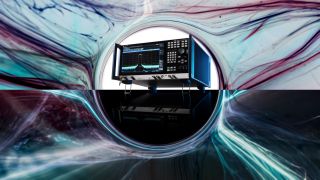Signal and spectrum analyzer technology | Understanding dynamic range
Spectrum analyzer dynamic range
Author: Paul Denisowski, Test & measurement expert
Measuring either high- or low-level signals is relatively straightforward: high-level signals can be measured by attenuating them by a known amount, and low-level signals can be more accurately measured with some amplification. However, accurately measuring both high- and low-level signals at the same time can be very challenging. Measuring very small signals in the presence of very large ones is a common spectrum analysis task. The dynamic range is what determines the ability of a spectrum analyzer to accurately measure both high- and low-level signals



















